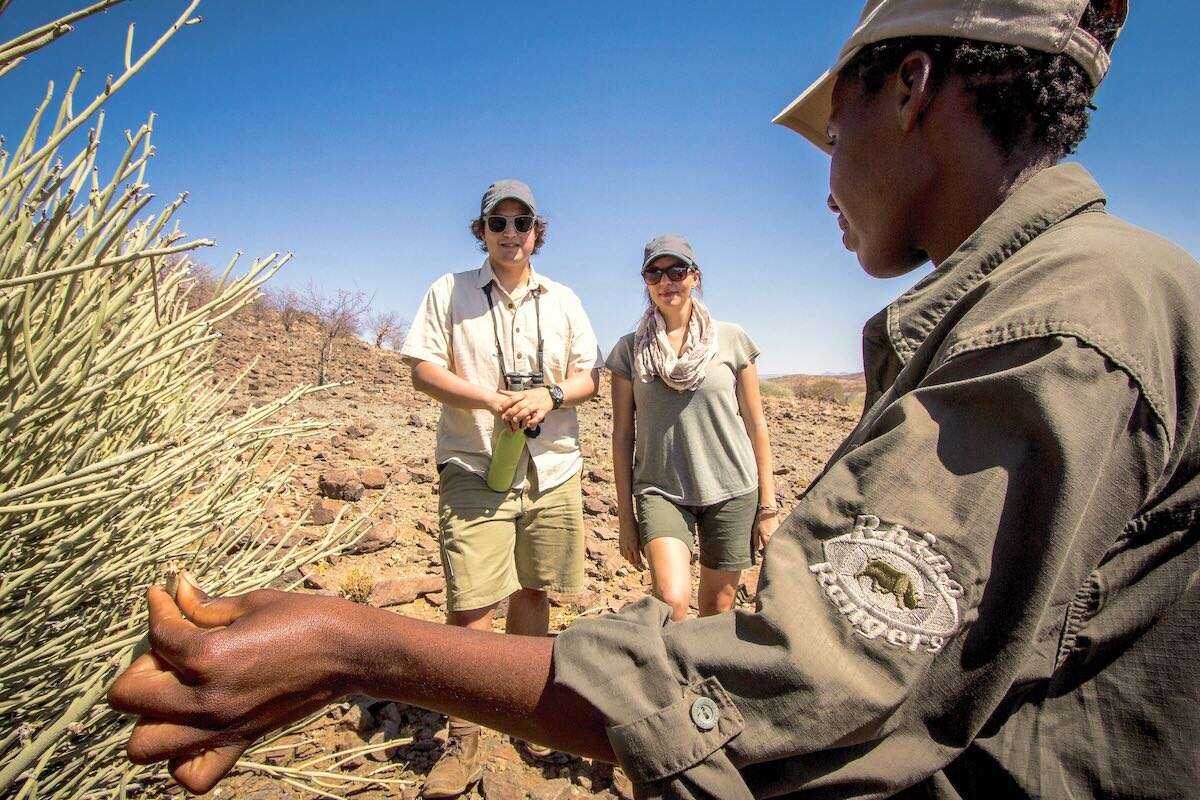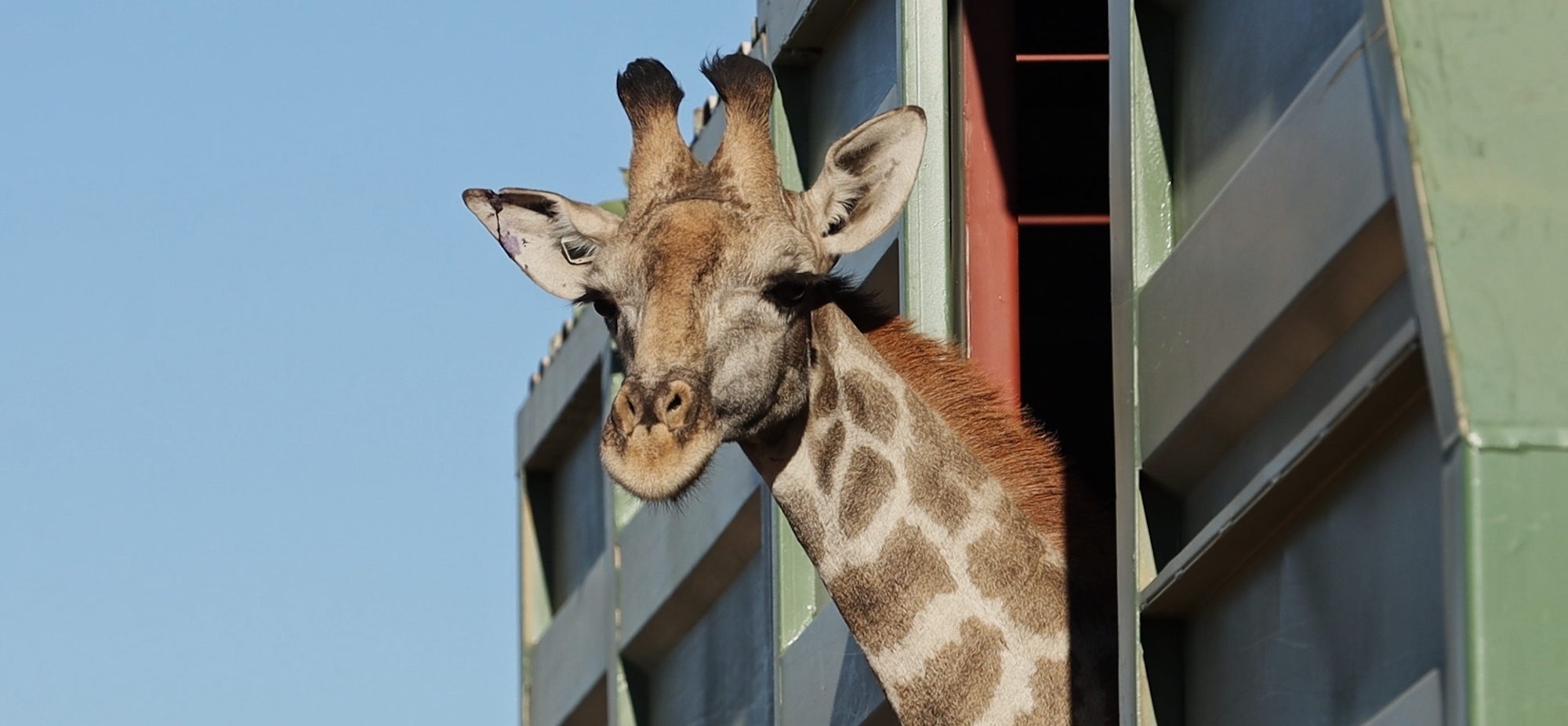
A triumph for giraffe conservation in Namibia
Reintroducing Angolan giraffe into communal conservancies in the remote northwest
9th November 2023
9th November 2023
Watching a journey of giraffes stride off a large translocation truck and make their first tentative steps in their new home is exhilarating and comes with a huge sigh of relief. Moving giraffes is not an easy feat and poses many risks to the animals as well as the people involved. So, when such a complex mission is completed successfully, it is cause for celebration.
As part of the long-term community-based conservation efforts in Namibia, four Angolan giraffes (a subspecies of the Southern giraffe that occurs in Southern Africa) donated by the Etosha Heights Private Reserve made the journey to the Ongongo and Otjiu West conservancies in early June. Coordinated by the Giraffe Conservation Foundation (GCF), this successful operation brought together public entities, private companies, community-based organisations, non-profit organisations and academic institutions to support the long-term conservation of these majestic creatures on communal lands.
The Ongongo and Otjiu West conservancies cover scenic yet harsh desert landscapes on the upper Hoarusib River. Giraffes disappeared from the area most likely during the severe dry spell of 1980 that coincided with high poaching rates. The members of both conservancies were keen to bring giraffes back to their areas and had submitted a formal request to the Ministry of Environment, Forestry and Tourism (MEFT) with the support of Integrated Rural Development and Nature Conservation (IRDNC).
The translocation was meticulously planned and executed by GCF and its partners as part of a 10-day training programme for African wildlife veterinarians on the Etosha Heights Private Reserve. This annual training course is organised and fully funded by GCF, and implemented in collaboration with the University of Namibia School of Veterinary Medicine.
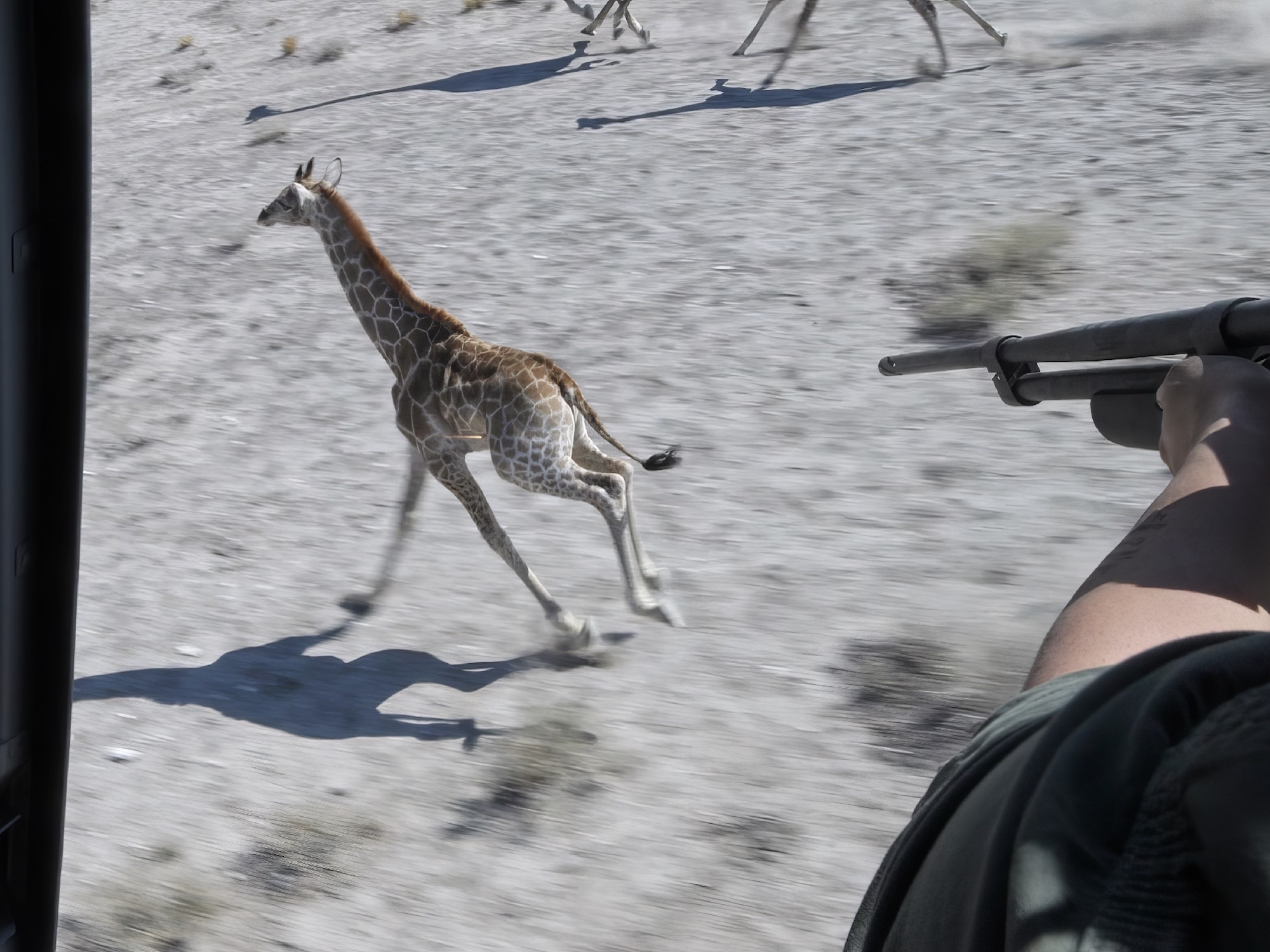

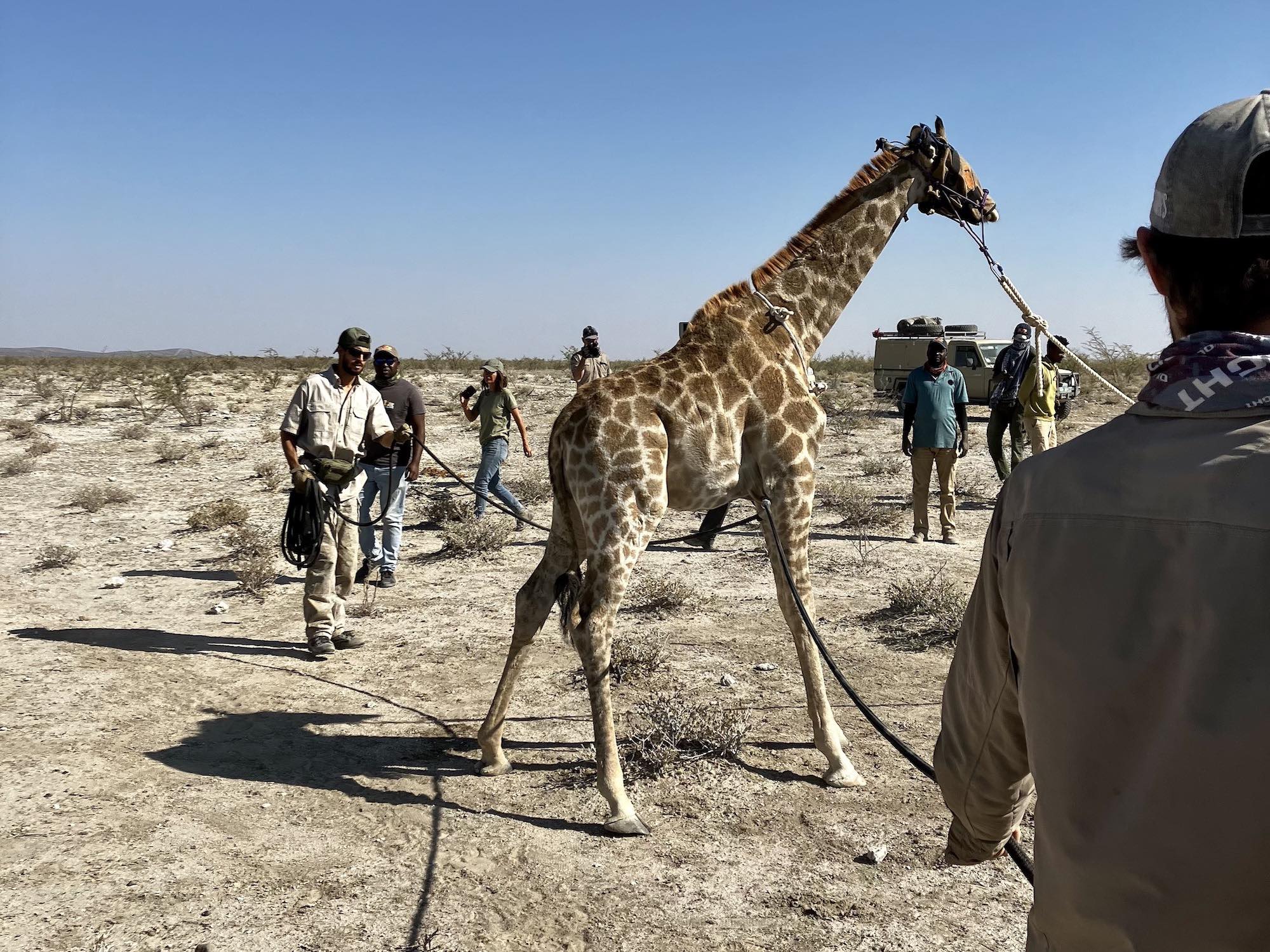
For the second year, GCF invited young wildlife veterinarians from different African countries to obtain hands-on specialist training in wildlife immobilisation. This year, course participants came from seven countries: the Central African Republic, Ethiopia, Malawi, Namibia, Nigeria, Tanzania and Zambia. Under the guidance of a handful of Namibian, South African and international wildlife veterinary experts these young doctors had the opportunity of a once-in-a-lifetime training experience.
Giraffe translocations require long-term planning. They are preceded by a comprehensive feasibility study to assess the likely success of an introduction and the giraffe’s contribution to the local ecosystem. This assessment was undertaken by Dr Morgan Hauptfleisch of the Biodiversity Research Centre at the Namibia University of Science and Technology (NUST), supported by IRDNC, the Namibian Chamber of Environment and GCF. It included determining the most suitable location for reintroducing the giraffes in these two conservancies. Key considerations were vegetation, water availability, road access, security and local community interest.
Giraffe translocations are high-risk operations because giraffe anatomy does not lend itself to easy transportation, and disaster can easily strike during any stage of the operation. However, with careful planning and experience, potential hazards can be minimised.

Up at sunrise on the day of the translocation, the team gathered in the field to do one last check of all equipment and vehicles. The previous afternoon had been spent planning the sequence of events, doing practice runs on the ground and making sure everything was ready for the next day's operation.
Dr Carl-Heinz Moeller of the African Wildlife Conservation Trust provided crucial support from the air. Not only an excellent helicopter pilot but also an experienced wildlife veterinarian himself, Dr Moeller knows how to identify individuals suitable for translocation and how to get the darting veterinarian into the perfect position to safely immobilise the animal. GCF's Dr Sara Ferguson was joined in the helicopter by one or two of the young African vets during each capture to show them the ropes, while other trainees were literally shown the ropes that are used by the ground capture team to bring each giraffe safely to the ground.
The MEFT Game Capture Unit under the guidance of Dr Janine Sharpe provided expertise and their specialist equipment to physically manoeuvre the long-necked live cargo first into a trailer and then into their large game capture truck for transport. Giraffe capture and translocation is a team effort, and together the team members from MEFT, IRDNC and GCF ensured the successful completion of this arduous task. After the early start, four long-legged giraffes had taken up temporary residence in the truck by lunchtime and were on their way northwest.

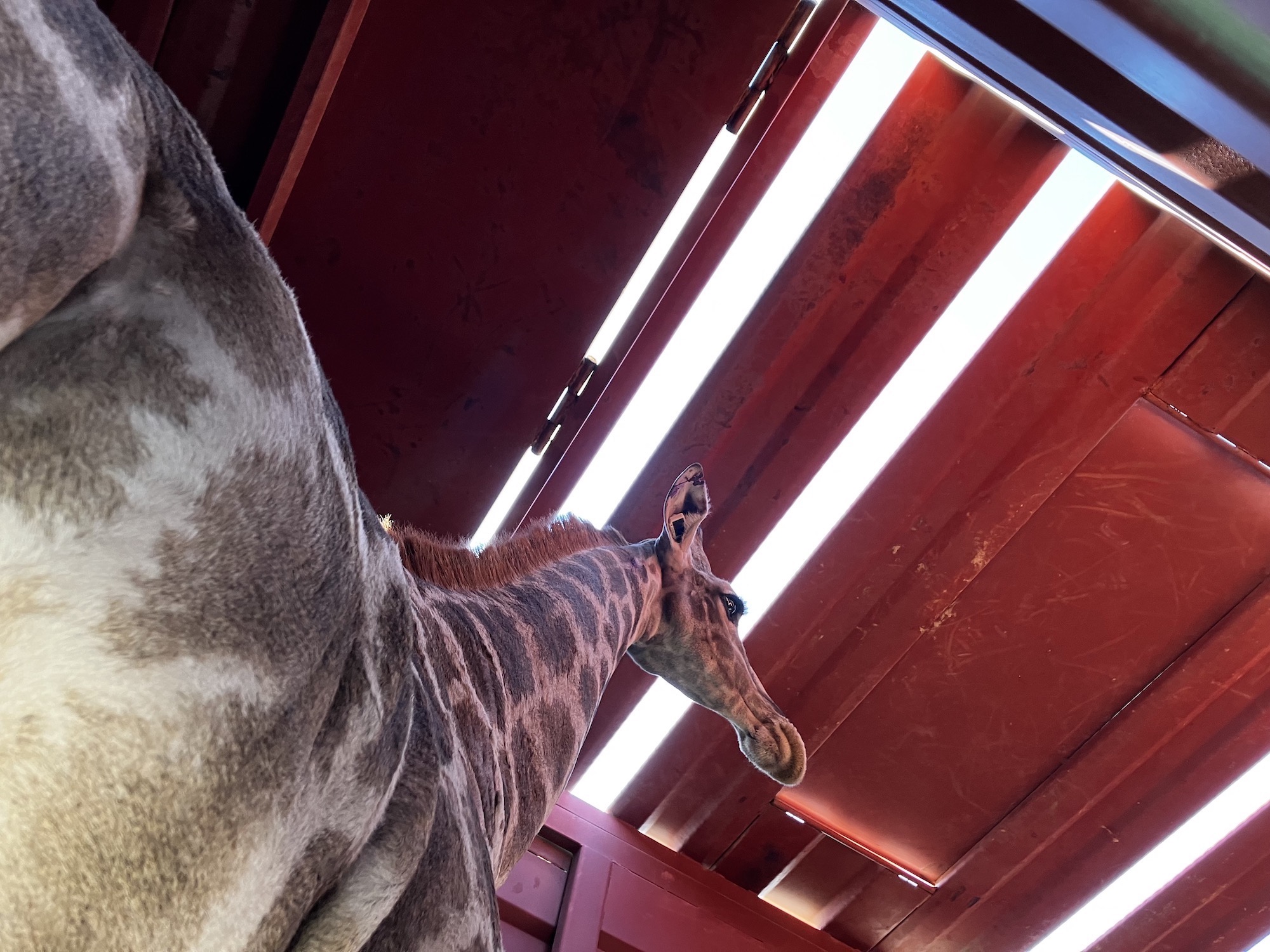
After a few minor repairs to the truck en route, the giraffes reached their destination at the border between the Ongongo and Otjiu West conservancies just before midnight. A crucial aspect to successful giraffe translocation is a smooth road for the truck, since any major shaking or hitting ditches can destabilise the precious passengers. Local conservancy members and IRDNC staff accepted the challenge and worked diligently to prepare the dirt road into the rugged and awe-inspiring landscapes by clearing vegetation that had encroached on the track. The truck still had to carefully navigate a few sandy and rather challenging river crossings to get to the destination. The hard work and careful driving paid off to ensure the safe delivery of the giraffes.
After a night in the truck, and with many excited community members in attendance, the giraffes were successfully released into their new habitat, marking a pivotal moment in their conservation journey. It has been many decades since giraffes roamed this part of northwestern Namibia, and the community spontaneously broke into joyous song and dance, excited to witness giraffes returning to their home. Since the release, the animals have been closely monitored by conservancy game guards. Three giraffes seem to have settled in the lush riparian area near Ongongo village where perennial pools in the river provide ample water, while one has ventured close to the foot of a hill, aptly named Giraffenberg.
This successful translocation stands as a significant milestone in the ongoing efforts to protect and conserve the Angolan giraffe population. The collaborative approach between conservation organisations, academic institutions and government bodies exemplifies the power of collective action in safeguarding Earth's precious biodiversity.
But this is only the beginning. Many similar operations to return more giraffes to these vast landscapes are in the pipeline. They will contribute to the ecological balance of the region. Their presence in the Ongongo and Otjiu-West conservancies serves as a testament to the unwavering dedication and passion of those who share their homes with wildlife for the good of the conservation and protection of these magnificent animals. By working together, we can ensure that future generations will have the privilege of witnessing the grace and beauty of these iconic creatures in their natural habitats.
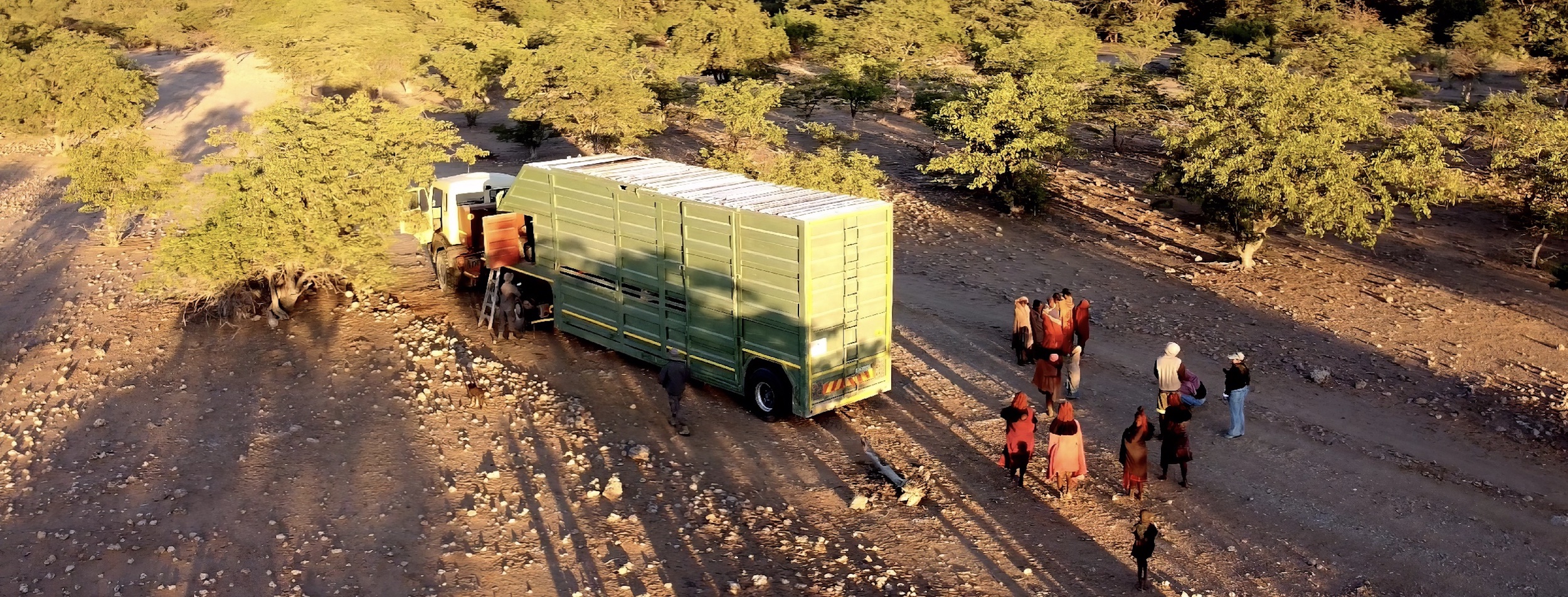
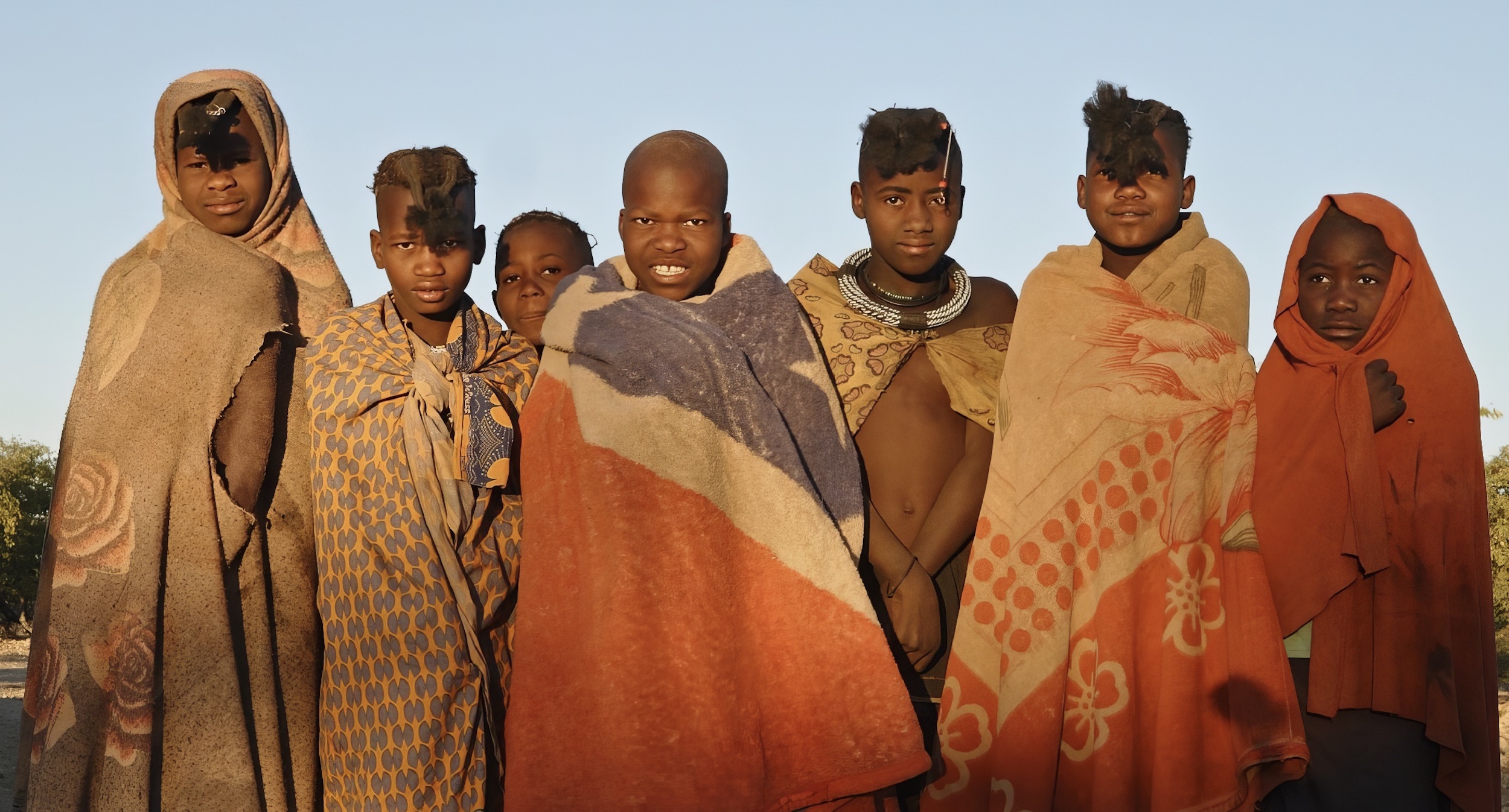
For articles on similar topics, please click one of the following options:
For more great articles from Conservation Namibia see below...
Conservation Namibia brought to you by:
We use cookies to monitor site usage and to help improve it. See our Privacy Policy for details. By continuing to use the site, you acknowledge acceptance of our policy.

